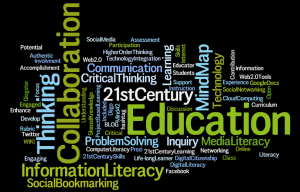And so the capstone begins……
Final class in Online Teaching & Learning – Best Practices series ( I’m finally here!)
Week 1
This week we began our course work with an evaluation of our current teaching practices.
My self-assessment results were not necessarily surprising to me. I scored high in the technical areas and feel confident in the use and instruction of technology tools. Administrative areas were also strong, having successfully completed competencies in this area. Some Pedagogical competencies were lacking, having never experienced teaching a class 100% online. Once I gain experience in being an online teacher, I can better assess my abilities in this area. The overall purpose of the self-assessment was clear, but I felt that some questions were unclear, leaving me to wonder if my answers would reflect a true assessment.
Having had over 10 years’ experience teaching in a traditional classroom, I pride myself on my abilities to integrate technology throughout my coursework and engage my students. I currently teach in a blended classroom environment, providing the opportunity to deliver grades, course expectations, feedback and general communications face-to face, as opposed to online. I do not currently need to deliver all my coursework solely via an online LMS and have purposely chosen certain lessons and deliverables remain in the physical classroom. I do provide all information electronically and have found it extremely beneficial to both myself and my students. As noted by Randy Meredith in his presentation on “Online Teaching and Learning – Differences and Similarities” from Spring Arbor University, the online student needs to be extremely self-motivated, self-regulated and possess good time management skills. At the high school level, I find some students are extremely reluctant to embrace the online option. Many still expect information to be delivered in the classroom; on paper, handed to them, by me. This allows them to step back from the responsibility of learning, handing the obligation to deliver and complete the course work squarely back to me, or so they hope. Unfortunately, I view this as an indication that these high-schoolers are not ready to take on the responsibilities necessary to be a successful online learner. However, it could also indicate that the delivery method could use improvement and I take full responsibility to deliver meaningful content in a way in which they can relate and appreciate.
My classes could be 100% online, and through the completion of this course, I hope to gain the knowledge to discover just the right method(s) to effectively deliver course content, communicate expectations, give adequate feedback, all while continuing to engage students and support lifelong learners.
🙂


